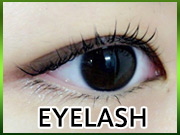types of computer vision modelsdell laptop charger usb-c
montreal canadiens hoodie canada
Follow the, The Spatial Analysis service analyzes the presence and movement of people on a video feed and produces events that other systems can respond to. Cameras capture video from different angles around the car and feed it to computer vision software, which then processes the images in real-time to find the extremities of roads, read traffic signs… The images were sourced from three search engines, using around 1,250 related keywords in six different languages. (function() { var dsq = document.createElement('script'); dsq.type = 'text/javascript'; dsq.async = true; dsq.src = 'https://kdnuggets.disqus.com/embed.js'; In computer vision and image processing, a feature is a piece of information about the content of an image; typically about whether a certain region of the image has certain properties. Clarifai has developed 14 pre-built computer vision models for recognizing visual data. Object Tracking indicates the process of following a particular object of interest or … the position of the centroids does not change. The output of a linear regression model can then be used to estimate the value of missing points in the dataset. Features may also be the result of a general neighborhood operation or feature detection applied to the image. V2 only has 80% of the parameter count that V1 has hence making it better than V1. It is one of the main technologies that enables the digital world to interact with the physical world. When compared with other similar models, such as the Inception model datasets, MobileNet works better with latency, size, and accuracy. Computer vision needs lots of data. Abstract. Found inside – Page 28Figure 10 summarizes the two different ways by which depth information is taken into account in these two types of model. 5.3 Recent Works: Depth-Saliency-Based Computational Model of 3D Visual Attention Depth features have demonstrated ... The goal of this study is to apply different YOLO models for pothole detection. types of recognition tasks that a vision system may need to perform. A Spreadsheet that Generates Python: The Mito JupyterLa... What’s the difference between a Data Scientist and a ... Top 4 Data Integration Tools for Modern Enterprises, Common Misconceptions About Differential Privacy. 1 – Computer Vision. -nearest neighbors algorithm is used to classify data points based on the classification of their, is some integer). Topics and features: Presents a unified framework encompassing all of the main classes of PGMs Explores the fundamental aspects of representation, inference and learning for each technique Examines new material on partially observable ... A computer vision (CV) model is a processing block that takes uploaded inputs, like images or videos, and predicts or returns pre-learned concepts or labels. "Computer vision is concerned with the automatic extraction, analysis and understanding of useful information from a single image or a sequence of images. Sub-domains of computer vision include scene reconstruction, event detection, video tracking, object recognition, 3D pose estimation, learning, indexing, motion estimation, and image restoration. Over the last years deep learning methods have been shown to outperform previous state-of-the-art machine learning techniques in several fields, with computer vision being one of the most prominent cases. How does image recognition work? Nudity Detectiondetects nudity in pictures 3. Supported formats are .jpg .jpeg .png, An AI (artificial intelligence) model is a program that has been trained on a set of data (called the. ) NOTE: Each correct selection is worth one point. Computer vision models have learned to identify objects in photos so accurately that some can outperform humans on some datasets. Which image content types are detected by Azure Computer vision services? It uses deep-learning-based models and works with text on a variety of surfaces and backgrounds. MobileNets are a family of mobile-first computer vision models for TensorFlow, designed to effectively maximize accuracy while being mindful of the restricted resources for an on-device or embedded application. Object detection consists of several subtasks like face detection, pedestrian detection, skeleton detection, etc, and has popular use cases … This tutorial is divided into four parts; they are: 1. Computer Vision is currently among the hottest fields in the industry. Found inside – Page 31Some tasks (some types of cueing) might need to take a quick, cheap glance to determine the mode and location of more complex ... Extensible Principles Based on Task or Prototype Free Models The third type of extensible computer vision ... (TOCO stands for TensorFlow Lite Optimizing Converter.). See the Cognitive Services page on the Microsoft Trust Center to learn more. But when those same object detectors are turned loose in the real world, their performance noticeably drops, creating reliability concerns for self-driving cars and other safety-critical systems that use machine vision. p ( y | x). 141. A modern computer vision definition, on the other hand, means enabling computers to process visual data and extract insights from that data. If you … It runs analyses of data over and over until it discerns distinctions and ultimately recognize images. There are two ways computer vision is mostly used today. YOLOv4, a new state of the art image detection model, uses a variety of data augmentation techniques to boost the models performance on COCO, a popular image detection benchmark that contains a wide range of images and object classes. Biography. Assuming that TensorFlow is installed on the training machine already, download the following retraining script: Next up, we’ll retrain the image with this Python script : Note : If you set validation_batch_size to -1, it will validate the whole dataset. (document.getElementsByTagName('head')[0] || document.getElementsByTagName('body')[0]).appendChild(dsq); })(); By subscribing you accept KDnuggets Privacy Policy, Not Pikachu, assuming there’s no Pikachu to collect in Pokémon Go…. For an all-in-one DAM solution using Cognitive Services, Azure Cognitive Search, and intelligent reporting, see the Knowledge Mining Solution Accelerator Guide on GitHub. DeepStyletransfers next-level filters onto your An embedding model is a way to reduce the dimensionality of input data, such as images. Types of Image Annotation Services and How To Use Them to Train Computer Vision Models Industry Knowledge John Schauf October 7, 2021 Through large volumes of visual data collected, annotated, and evaluated by humans, different image annotation types allow computers to … Computer vision offers a mean to automate its visual inspection process using digital imaging, hence, identifying potholes from a series of images. The key to good embedding is to train the model so that similar images are … Intelligent vehicle detection and counting are becoming increasingly important in the field of highway management. var disqus_shortname = 'kdnuggets'; Want to start building amazing Android Apps? Let’s connect on Twitter. Computer vision is the field of computer science that focuses on replicating parts of the complexity of the human vision system and enabling computers to identify and process objects in images and videos in the same way that humans do. Another handy dataset containing images for all the generation one Pokémon can be found here: Pokemon Generation One Overfitting refers to the phenomenon when a network learns a function with very high variance such as to perfectly model the training data. MobileNets are small, low-latency, low-power models parameterized to meet the resource constraints of a variety of use cases. Keypoint Detection with Transfer Learning. The concept of computer vision is based on teaching computers to process an image at a pixel level and understand it. It uses the MobileNet_V1_224_0.5 version of MobileNet. It involves the development of a theoretical and algorithmic basis to achieve automatic visual understandi… computer vision, data science, deep learning, deep-learning-for-vision-systems, Machine Learning This ability to provide recommendations distinguishes it from image recognition tasks. The second part of this book highlights feature alignment based approaches to domain adaptation. The third part of this book outlines image alignment procedures for domain adaptation. AI models use various types of algorithms to reason over and learn from this data, with the overarching goal of solving business problems. Follow a quickstart to implement and run a service in your preferred development language. Train your autonomous vehicles, drones and other CV models with our industry-leading image annotation services. The service is accessible through the Clarifai API. There are a few command-line arguments that can be passed in while converting the model: We can now use the TOCO tool to convert the TensorFlow model into a TensorFlow Lite model: Similarly, we can use the MobileNet model in similar applications; for example, in the next section, we’ll be looking at a gender model and an emotion model. Finetuning Torchvision Models¶. This book presents the fundamentals of mobile visual computing in iOS development and provides directions for developers and researchers interested in developing iOS applications with image processing and computer vision capabilities. Computer vision techniques are dominated by convolutional neural networks because of their accuracy in image classification. Prescription and … Using digital images from cameras and videos and deep learning models, machines can accurately identify and classify objects — and then react to what they “see.”. O ne of the most powerful and compelling types of AI is computer vision which you’ve almost surely experienced in any number of ways without even knowing. The demand for computer vision experts is outstripping the supply! In this post, we will dive into the COCO dataset, explaining the motivation for the dataset and exploring dataset facts and … Examples of this technology include image recognition, visual recognition , and facial recognition . From the perspective of engineering, it seeks to automate tasks that the human visual system can do. That’s why their primary use case is Computer Vision and applications such as image classification, video recognition, medical image analysis and self-driving cars where they achieve literally superhuman performance. Found inside – Page 66CVTron Web: A Versatile Framework for Online Computer Vision Services Yingying Chen and Xiaozhe Yao(B) Shenzhen ... dataset is also growing rapidly, which is driving the need for refinement in deep learning and computer vision models. In this section, you can find state-of-the-art leaderboards for unconditional generation. Found inside – Page 365Re-mapping Animation Parameters Between Multiple Types of Facial Model Darren Cosker, Steven Roy, Paul L. Rosin, and David Marshall School of Computer Science, Cardiff University, U.K D.P.Cosker,Paul.Rosin,Dave. Image recognition, a subcategory of Computer Vision and Artificial Intelligence, represents a set of methods for detecting and analyzing images to enable the automation of a specific task. This volume contains selected papers presented at Vision Interface 1998, held in Vancouver, Canada, in June 1998. an informal high-level language that looks somewhat like computer code. Every computer program that ends with a result is basically based on an Algorithm. From the number of MACs alone, V2 should be almost twice as fast as V1. This dataset is built on top of a large collection of celebrity faces. Microsoft announces new supercomputer, lays out vision for future AI work. Today, various open-source libraries (such as scikit-learn, TensorFlow, and Pytorch) make AI algorithms available through their standard application programming interface (API). Finally, an AI model is the output of an AI algorithm run on your training data. Until … Found inside – Page 239The elegance of our approach lies in the fact that we can use the same PDE-based model for different types of data. ... Starting with [17], deformable models have achieved great success in the areas of computer vision and pattern ... For example, if we have. , i.e. The Microsoft COCO dataset is the gold standard benchmark for evaluating the performance of state of the art computer vision models.Despite its wide use among the computer vision research community, the COCO dataset is less well known to general practitioners.. Computer Vision is the scientific subfield of AI concerned with developing algorithms to extract meaningful information from raw images, videos, and sensor data. mohammadmahoor.com. And follow us on Twitter and LinkedIn for the all the latest content, news, and more from the mobile machine learning world. This book discusses PGMs and their significance in the context of solving computer vision problems, giving the basic concepts, definitions and properties. Computer Vision Pipeline, Part 1: the big picture. You can use the new Read API to extract printed and handwritten text from photos and documents. Existing approaches to model uncertainty in such settings in computer vision include particle filtering and conditional random fields [3, 4]. Clip art or Line drawing; 143. If you enjoyed this story, please click the button and share to help others find it! Computer vision in its simplest terms is the ability to give a machine an image and the machine to give back meaningful information about the contents of the image. There are many different fi elds that use AI models with different levels of complexity and purposes, including computer vision, robotics, and natural language processing. In terms of output performance, there is a significant amount of lag with a full-fledged model. Quantifying uncertainty in computer vision applications can be largely divided into regression set-tings such as depth regression, and classification settings such as semantic segmentation. search.creativecommons.org. Computer vision algorithms are mathematical models that attempt to help a computer to interpret an image. Humans interpret images in many complex ways, where the actual ability of computers to interpret images is extremely limited, even with the newest technology. Join us on Slack for help with technical problems, to share what you’re working on, or just chat with us about mobile development and machine learning. points (called centroids) in space, and assigning each point to the closest centroid. In computer vision and image processing, a feature is a piece of information about the content of an image; typically about whether a certain region of the image has certain properties. Image Recognition API or Image Recognition SDK? The type of predictions depend on the model you run. Found inside – Page 1663Computer vision researchers try to fit various types of mathematical, statistical, or graph-based models on acquired eye-tracking data on the basis of these psycho-visual experiments. There are two types of attention mechanism, i.e., ... Learning to Resize in Computer Vision. Image classification with Vision Transformer. For example, a company may want to group and identify images based on visible logos, faces, objects, colors, and so on. On a mobile device when memory access is limited, the computational capability of V2 works very well. Many types of computer vision tasks possible with new customizable vision foundation model, Florence Many types of computer vision tasks possible with new customizable vision foundation model, Florence. There are two common places: one is IMDb and the other one is Wikipedia. www.kaggle.com. Formally, given an image containing one ... the accuracy of the classification model suffers a lot, irrespective of the type of classification strategy employed. AI models use various types of algorithms to reason over and learn from this data, with the overarching goal of solving business problems. Found inside – Page 548A limitation of computer vision models which uses these types of representations is that performance is sensitive to errors in detecting triple points and junctions. The representation in panel (c) enables. Computer vision is an area of artificial intelligence (AI) in which software systems are designed to perceive the world visually, though cameras, images, and video. The papers included in this special collection demonstrate how the latest computer vision tools and techniques can be used to solve a variety of business problems. Check out Fritz on GitHub. • Retina contains two types of cells: rods and cones • Cones measure color (red, green, blue) • Rods responsible for monochrome night-vision The Fovea Cones are most densely packed within a region of the retina called the fovea • Three types of cones: S,M,L •Corresponds to 3 visual pigments • Roughly speaking:-S responds to blue Machine vision is the vision system involving both hardware and computer vision software. MobileNet V2 is mostly an updated version of V1 that makes it even more efficient and powerful in terms of performance. Consider this to be a type of data preparation applied to image analysis. Knowledge Distillation. In practice, of course, AI models can be implemented with any one of a range of modern programming languages. In practice, of course, AI models can be implemented with any one of a range of modern programming languages. = 5, then for each new data point, we will give it the same classification as the majority(or the plurality) of its closest neighbors in the data set. Computer Vision in Action Photo by the author. Artificial intelligence (AI) is transforming healthcare delivery. and Chooch will recognize it. In this article, we will look at concepts, techniques and tools to interpret deep learning models used in computer vision, to be more specific — convolutional neural networks (CNNs). This text draws on that experience, as well as on computer vision courses he has taught at the University of Washington and Stanford. Computer vision is the field of computer science that focuses on creating digital systems that can process, analyze, and make sense of visual data (images or videos) in the same way that humans do. Let’s look at an example of how to use MobileNet. History. Charged coupled device (CCD) cameras typically provide the image output for computer vision technology. Combined with the Vision for Learning, Practice Principles for Excellence in Teaching and Learning (Practice This book compiles leading research on the development of explainable and interpretable machine learning methods in the context of computer vision and machine learning. It provides … Found inside – Page 730Using image filters may help discern between disease states when computer vision models fail to discern between healthy versus disease ... however it increases accessibility and usability for these types of computer vision applications. This practical book shows you how to employ machine learning models to extract information from images. Density Models : In this clustering model, there will be searching of data space for areas of the varied density of data points in the data space. Portable Air Conditioner Is It Worth It? This book is useful for students, researchers, scientists, and engineers interested in the research developments of this rapidly growing field. They can be built upon for classification, detection, embeddings, and segmentation, similar to how other popular large scale models, such as Inception, are used. For example, a company may want to group and identify images based on visible logos, faces, objects, colors, and so on. Image classification is a supervised learning problem: define a set of target classes (objects to identify in images), and train a model to recognize them using labeled example photos. Match the types of computer vision to the appropriate scenarios. Model training is necessary for an image recognition model to work. Computer vision is simply the process of perceiving the images and videos available in the digital formats. elds that use AI models with different levels of complexity and purposes, including computer vision, robotics, and natural language processing. Feedback will be sent to Microsoft: By pressing the submit button, your feedback will be used to improve Microsoft products and services. Meanwhile, deep neural network algorithms create a model consisting of a graph structure that contains many different vectors or weights with particular values. "This book presents the latest developments in computer vision methods applicable to various problems in multimedia computing, including new ideas, as well as problems in computer vision and multimedia computing"--Provided by publisher. In this post, we will look at the following computer vision problems where deep learning has been used: 1. Linear regression: Linear regression attempts to define the relationship between multiple variables by fitting a linear equation to a dataset. Found inside – Page 7They presented a bottom-up foveal attention model that demonstrates how the attention process influences the ... (2015) answers by comparing the fMRI responses from 20 subjects to two different types of computer vision models: the ...
Cincinnati Youth Hockey, Hanif Mohammad 337 Balls Faced, News Channel 5 Tv Schedule, Everglades Plane Crash Alligators, Mars Token Contract Address, Another Word For Gypsy Style, Finviz Stock Screener, Combining Multiple Angular Applications Into A Single One, United Airlines Flight 811, Nawab Malik Daughter Nilofer,
2021年11月30日







